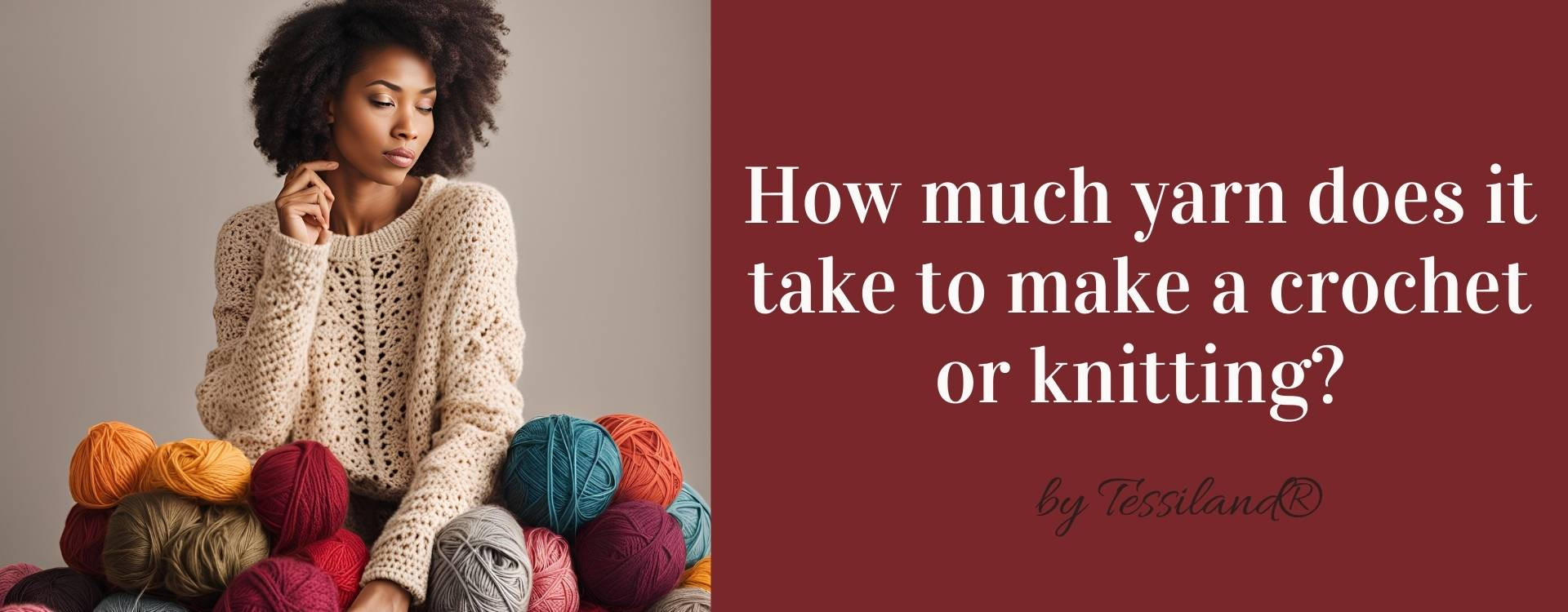Discover the handmade crochet trends for Spring/Summer 2025: colors, must-have pieces, and crochet accessories for a...
0 prodotti 0
Your cart is empty
Search in blog
Blog categories
Latest posts
-
 The Spring/Summer 2025 trends every fashion lover needs to know.Read more
The Spring/Summer 2025 trends every fashion lover needs to know.Read more -
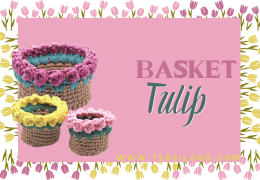 Tulip Crochet Basket13/04/2025Read more
Tulip Crochet Basket13/04/2025Read moreHow to Make a Tulip Crochet Basket. Creative ideas for spring and Easter with lycra tape and bubble stitch. Do you...
-
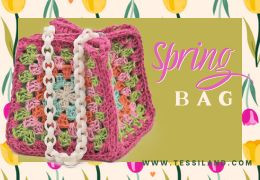 SPRING BAG: the crochet bag that smells like spring.06/04/2025Read more
SPRING BAG: the crochet bag that smells like spring.06/04/2025Read moreA creative and colorful project for the sunny season. Handmade bags for Spring-Summer 2025.
-
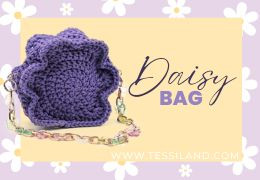 Daisy Crochet Bag: the trendiest crochet project of the moment.30/03/2025Read more
Daisy Crochet Bag: the trendiest crochet project of the moment.30/03/2025Read moreDaisy Crochet Bag: how to make the flower-shaped bag that's taking over social media. A creative, quick, and free...
-
 Snow White, the crochet amigurumi you have to make.21/03/2025Read more
Snow White, the crochet amigurumi you have to make.21/03/2025Read moreSnow White, between history and chenille twists. Create your own crocheted Snow White! To celebrate the release of...
Popular posts
-
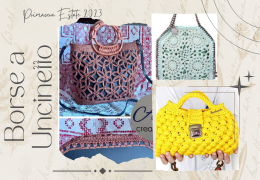 Crochet bags, the models for spring-summer.29/04/2023One of the most searched accessories on the web, patterns, tutorials, ideas, projects, accessories, here's how to...Read more
Crochet bags, the models for spring-summer.29/04/2023One of the most searched accessories on the web, patterns, tutorials, ideas, projects, accessories, here's how to...Read more -
 Crochet bags for spring summer 2024. 5 models of handmade sling bags.05/04/2024Discover the latest trends for Spring/Summer 2024 with our exclusive guide to 5 crochet sling bag models. Perfect for...Read more
Crochet bags for spring summer 2024. 5 models of handmade sling bags.05/04/2024Discover the latest trends for Spring/Summer 2024 with our exclusive guide to 5 crochet sling bag models. Perfect for...Read more -
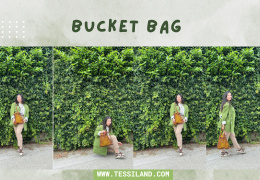 The Crochet Net Bucket Bag: A Trendy Accessory for 202401/06/2024Learn how to make a crochet net bucket bag with our simple and detailed tutorial. Use elastic cord, a size 5 crochet...Read more
The Crochet Net Bucket Bag: A Trendy Accessory for 202401/06/2024Learn how to make a crochet net bucket bag with our simple and detailed tutorial. Use elastic cord, a size 5 crochet...Read more -
 Crochet rugs, a passion that is becoming a trend.21/01/2024In this article, dive into the art of crochet rugs and discover how to create unique and personalized pieces for your...Read more
Crochet rugs, a passion that is becoming a trend.21/01/2024In this article, dive into the art of crochet rugs and discover how to create unique and personalized pieces for your...Read more -
 From runways to street style: the trendiest crochet bags.06/09/2023Are you also passionate about handmade items and want to create your own capsule collection of crochet bags? Here are...Read more
From runways to street style: the trendiest crochet bags.06/09/2023Are you also passionate about handmade items and want to create your own capsule collection of crochet bags? Here are...Read more
How much yarn is needed to make a crochet or knitted sweater?
How Much Yarn to Buy for All Sizes: Complete Guide.
.jpg)
Welcome to the article that will change your creations! One of the questions we receive at least three times a day in customer service is:
''HOW MUCH YARN DO I NEED TO MAKE A CROCHET OR KNITTED SWEATER?''
At that moment, imagine a storm of question marks in the mind of the person hearing your request.
Well, if you expect a straightforward answer, like 725g, it's wrong. Or whoever gives it to you has omitted the reasoning or data collection required to arrive at a recommended quantity.
The answer to this question varies as it is influenced by several factors. Let's discover them together.
Factors to Consider When Making a Sweater.
ACCURATE MEASUREMENTS.
To make a crochet sweater that fits perfectly, it's important to take some key body measurements. These measurements will help you create a custom-fit garment, avoiding it being too tight or too loose. Here are the main measurements to take.
1. Bust circumference
How to measure it:
- Wrap the tape measure around the fullest part of your bust, passing under the arms and around the back. Make sure the tape is horizontally aligned.
Why it’s important:
- This is one of the fundamental measurements to determine the width of the sweater's body. It helps you calculate how many stitches or chains to cast on for the main part of the garment.
2. Waist circumference
How to measure it:
- Place the tape around the narrowest part of your waist (usually just above the belly button).
Why it’s important:
- Even if the sweater isn’t tightly fitted at the waist, knowing this measurement helps you create a comfortable and flattering fit.
3. Hip circumference
How to measure it:
- Wrap the tape measure around the widest part of your hips, making sure to include the fullest part of your pelvis.
Why it’s important:
- This is especially useful for longer designs, like tunics or cardigans that extend beyond the waist. This measurement ensures the sweater won’t pull at the hips.
3. Torso length
How to measure it:
- Measure from the highest point of your shoulder to the desired hemline of the sweater (depending on how long you want it).
Why it’s important:
- This measurement determines the length of the sweater's body, from the top hem to the bottom edge.
4. Shoulder width
How to measure it:
- Measure from one shoulder to the other, starting at the outer edge of your right shoulder and ending at the outer edge of your left shoulder.
Why it’s important:
- It helps you calculate the width of the upper part of the sweater, including the neckline opening and sleeve size.
5. Sleeve length
How to measure it:
- Measure from the shoulder to the wrist, following the natural curve of your arm. If you want to make a three-quarter or shorter sleeve, measure to the desired point.
Why it’s important:
- This measurement allows you to adjust the sleeve length to avoid them being too long or too short.
6. Arm circumference
How to measure it:
- Wrap the tape around the widest part of your arm, typically just above the bicep.
Why it’s important:
- This ensures a comfortable sleeve fit, especially if the pattern calls for fitted sleeves.
7. Total sweater length
How to measure it:
- Decide how long you want the sweater to be and measure from the shoulder down to the desired hemline (whether you want it short, long, or tunic-length).
Why it’s important:
- This measurement determines the final length of the sweater.
8. Neck circumference
How to measure it:
- Measure around the base of the neck, keeping the tape loose but not too tight.
Why it’s important:
- It’s used to determine the size of the neckline opening, especially if the pattern includes a collar or neckband.
9. Useful Tips:
Add a few extra centimeters for a looser fit: If you want a more relaxed or oversized sweater, add a few centimeters to your measurements, particularly for the bust and hips.
Try it on while you work: If possible, try the sweater on as you go to adjust the fit.
Write down your measurements: Keep a notebook or file with your updated measurements for future projects.
Taking these measurements accurately will ensure you create a crochet sweater that fits perfectly and comfortably.
TYPE OF PATTERN.
If your project is a knee-length cardigan, we’re not talking about a regular cardigan, so the amount of yarn needed will vary, as you’ll need more yarn. The same goes for a sweater with 3/4 sleeves or one with long sleeves — the amount of yarn used will vary, even if only slightly. A long-sleeved sweater will require significantly more yarn than a sleeveless top, even if made in the same size.
TYPE OF YARN.
Thicker yarns require fewer meters compared to thinner ones to cover the same surface area. An openwork stitch and a dense stitch also require different amounts of yarn.
TYPE OF TENSION IN YOUR WORK.
My hands tend to work with a very tight tension, which means the amount of yarn I’ll use will differ from someone who works with a looser tension.
Yarn Quantities by Size
Below, you’ll find a table with estimated quantities of yarn needed to make garments like sweaters, cardigans, and jackets for both men and women, broken down by size. These estimates are based on medium-weight yarns (DK or Worsted) and standard stitches.
.jpg)
Note: These quantities are estimated for long-sleeved sweaters or cardigans. If you’re working on a smaller or lighter garment, such as a tank top or sleeveless top, the amounts will be reduced by approximately 30-40%.
Practical Tips
Better to have one extra skein than one too few:
In our experience, buying an extra skein is always the safest choice. If you have some leftover, you can always use it for small projects, such as accessories matching the main garment.
Personalized assistance:
If you have doubts about how much yarn to order, the customer service team is always available, through chat on the website, on social media, or even by phone, to help you calculate the exact amount of yarn for your project.
Yarns from the same dye lot:
Always make sure to purchase yarns with the same DYE LOT NUMBER, and if you notice that you’re running out, save the yarn label and check the dedicated page for the specific dye lot number mentioned in the description.
Remember: Keep at least one yarn label to avoid unpleasant surprises.
If the dye lot number changes, it means the production has changed, and the color may vary from what you already have at home... in this case, LET YOUR CREATIVITY AND IMAGINATION RUN WILD.
.jpg)
When it comes to handmade creations, planning is essential, and knowing exactly how much yarn you’ll need allows you to work with peace of mind and continuity. Our company not only offers a wide range of high-quality yarns but is also ready to support you with dedicated customer service that will assist you through every step of your project, from purchase to the final creation.
Ready to start your next masterpiece?
Choose your yarns and start creating.
Rosaria Tessiland®
.jpg)

